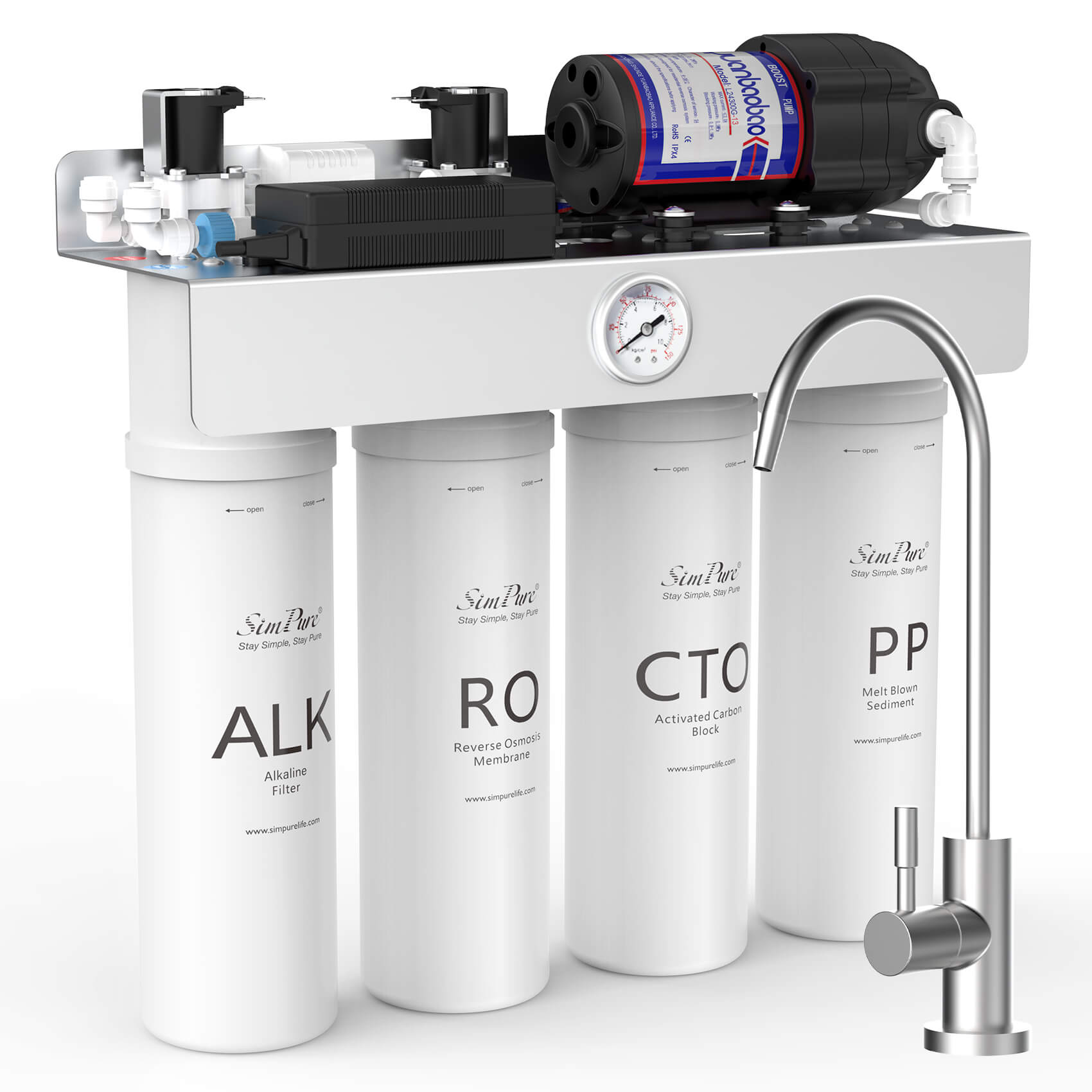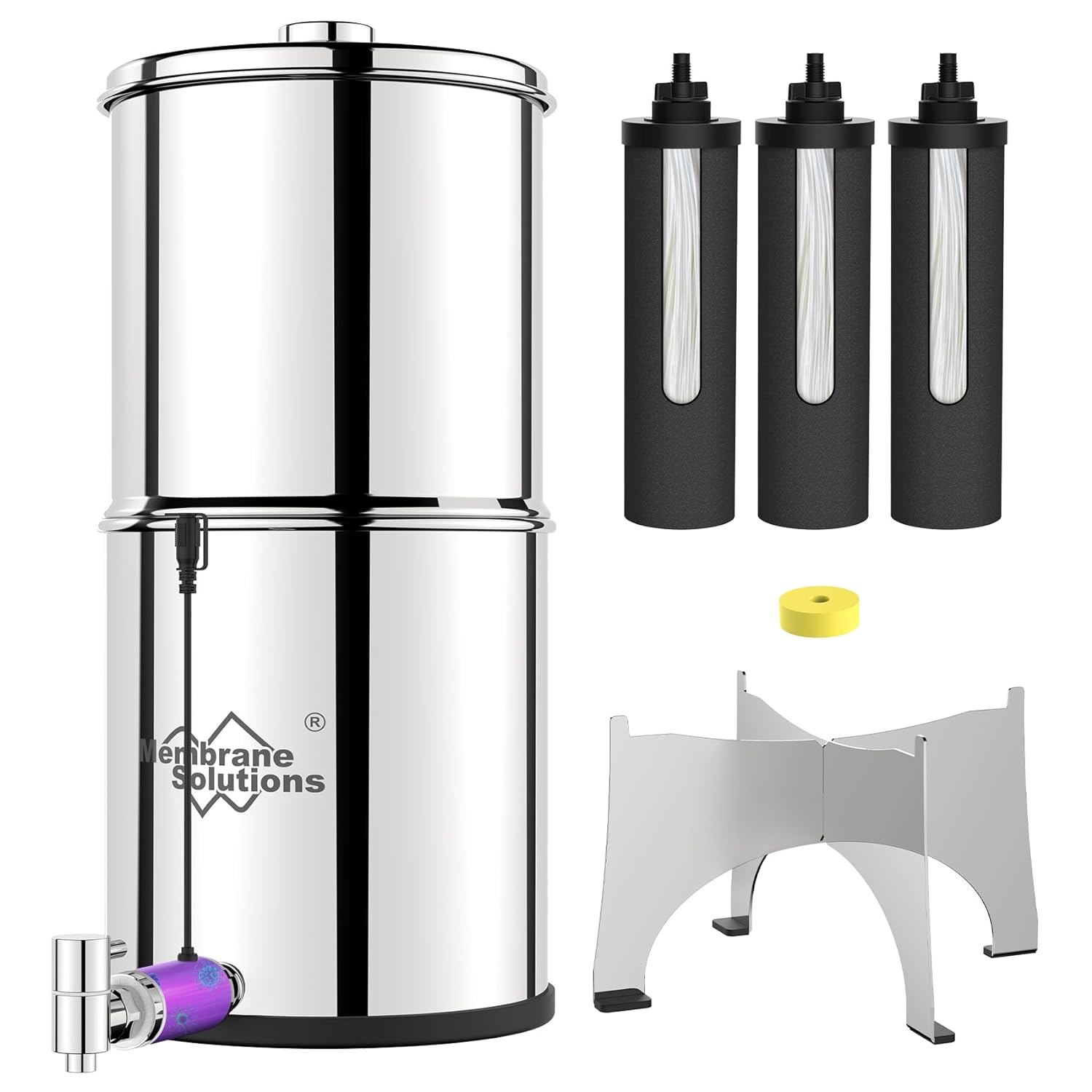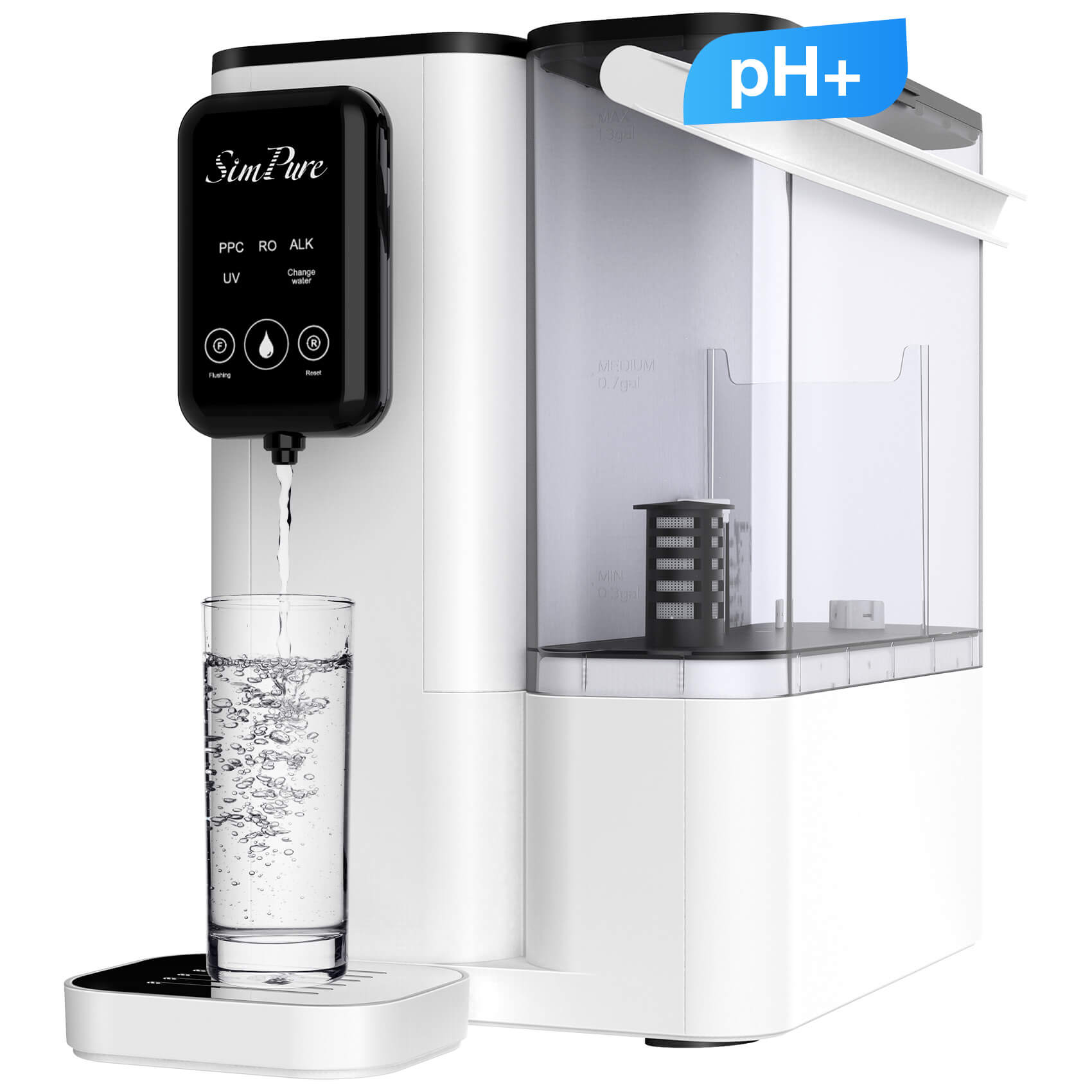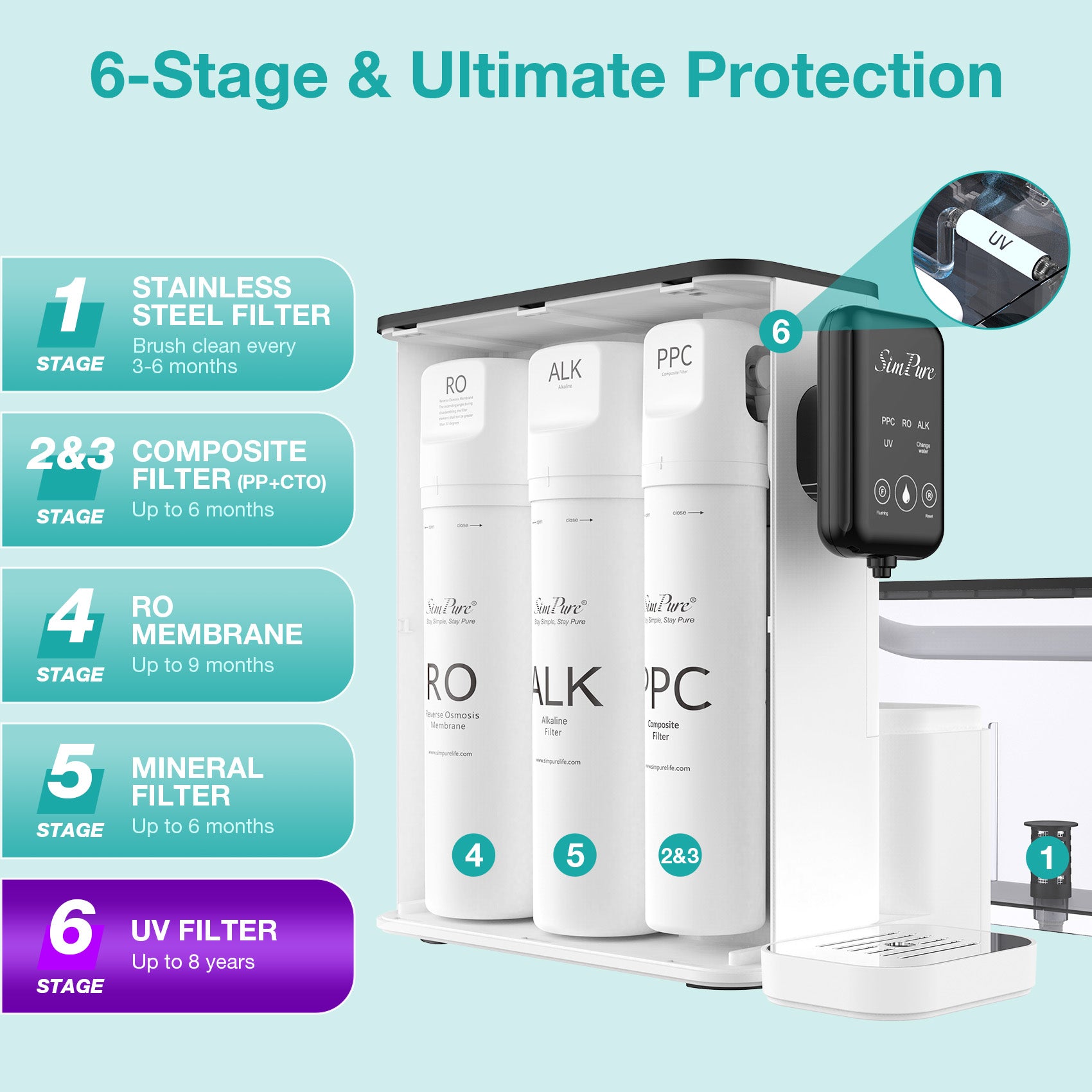Fostering dental health is one of the reasons why fluoride is intentionally introduced into water. Nevertheless, it has become a debate considering the adverse effects of the overuse of fluoride and its safety of use in humans and nature. It's not every person's cup of tea. It will make you happy to learn that this can be removed completely if you have some health conditions and cannot wait to try out water options that are more eco-friendly.
This blog provides different excellent and affordable techniques on how to remove fluoride from water according to your budget and preferences. By the end of this blog, you will be able to determine what type of drinking water you want for yourself.
What is Fluoride?

Fluoride is a mineral found naturally in water, soil, and certain foods. It is commonly introduced in bottled water due to various health advantages, one of them being oral health. Fluoride not only helps in avoiding cavities but also promotes the growth of healthy teeth. The amount of fluoride present in different sources might differ. Water fluoridation practice of adding certain levels of fluoride to water, is a term that has been common for years. Ever since there have been reports among the general populations of emulating water fluoridation due to its effectiveness in preventing dental caries since low levels of fluoride in drinking water were traced back to the turn of the twentieth century. World Health Organization has recommended a limit of 1.5 mg/liter of fluoride in drinking water.
Why Remove Fluoride?
If you wish to learn how to remove fluoride from water, you must first know the reasons behind such a desire. Here are different reasons some people are against the deviation of water from its natural composition by the addition of fluoride:

Health Risks
Fluoride can contribute to deformities of the teeth, as well as skeletal deformities known as skeletal fluorosis, one of the diseases that interfere with the development of teeth, the protective covering of the teeth called the enamel, among others, and bone conditions. Dental Fluorosis is classified as a restriction of normal dental development due to overuse of fluoride-containing products. It's primarily a cosmetic, unsightly staining of the enamel of the teeth.
Skeletal fluorosis is associated with a similar process in that excess build-up, hardening and lack of elasticity of bone also occurs increasing the propensity of fractures and loss of range of motion at the joints. This has been one of the reasons why the EPA has set a primary standard for the concentration of fluoride in water supplies which is also the reason why its infrequent use.
Furthermore, it is also possible for a patient to have an acute fluoride level above the therapeutic range in the community water supply. This results in nausea, vomiting, and inflammation, in some extreme cases, even death.
Environmental Concerns
Some people oppose fluoride as they state that fluoride may seep into aquatic ecosystems and harm wildlife.
In light of these issues, the U.S. Public Health Service suggests maintaining fluoride levels in treatment between 0.7 mg/L as this concentration is considered ideal for dental health. It prevents fluorosis to some extent. For additional fluorosis control, The United States Environmental Protection Agency (EPA, 2014) has outlined a drinking water standard that restricts the fluoride concentration in public drinking water systems to 4.0 mg/L.
How to Remove Fluoride from Drinking Water?

Now let’s proceed to how to remove fluoride from water using affordable and natural methods.
Affordable Methods
If you are looking for the cheapest method of fixing fluoridated water, consider the following solutions.
Reverse Osmosis
-
Reverse osmosis is the best solution and is very popular even as a whole-house filter system. The reverse osmosis system features a pre-filter that removes salt and chlorine. Water from treated filters is forced into a device against a membrane that excludes certain solids dissolved in the water. This membrane can be described as being porous with a coating on one side which permits water and free ionic elements to enter the coating but not salts, organics, bacteria, and viruses from the opposite side of the membrane.

-
The size of the pores is typically 0.0001 microns which means that organisms such as viruses (approximately 0.02-0.4 microns) and bacteria (0.4-1 microns) cannot penetrate them. Thus, a whole-house reverse osmosis water filter system allows one to enjoy drinking purified water because it adheres to all these principles.
-
Reverse osmosis applies to any kind of contaminant, including fluoride. It thus makes water safe for consumption.
Natural Methods
How to remove fluoride from water for free and naturally? Here we guide you to solve how to remove fluoride from water is via distillation.
Distillation
-
During distillation, water is heated until it eventually boils and vaporizes. Since impurities like fluoride do not evaporate, they are left behind, and as the vapor rises; it cools and condenses into liquid form. The resulting water will be pure without fluoride.
-
Although part of distillation is boiling, note that distillation is much more efficient at removing fluoride than boiling water. (for more, read Does Boiling Water Remove Fluoride ) ; With simple boiling, the mineral is not affected as water boils. Because fluoride has a boiling point significantly higher than that of water, it remains in the container. This means that when the steam turns back into liquid again upon cooling, you now have fluoride-free water.
Moreover, read about Which Water Filters Remove Fluoride from drinking water. This blog introduces many detailed methods for you.
Treating Fluoride in Water Pipes
If you wonder how to remove fluoride from water pipes, you can employ activated carbon filters. Their porous composition and adsorption properties make it possible to hold even more fluoride. Activated carbon granules act in the water pipes as a capture point for fluoride ions, impurities, and contaminants through flowing waters within these activated carbons that have surfaces with various pores utilized for attracting and retaining fluoride, impurities, and contaminants.
As the water passes over the filter, fluoride ions bind with the carbon, thus lowering the fluoride levels. Renowned for the ability to target and trap a wide variety of contaminants, carbon filters are usually the most favored solution among households and other businesses looking to filter out their water impurities.
How Effective Are These Methods for Fluoride Removal at Home?
While all the solutions mentioned above (distillation, reverse osmosis, activated carbon) are effective at filtering out fluoride, let’s analyze each method in terms of efficiency, cost, and convenience.
|
Method |
Cost |
Effectiveness |
Convenience |
|
Reverse Osmosis |
Expensive upfront but affordable in the long run. |
Highly effective at removing fluoride |
Convenient and fast filtration |
|
Distillation |
Low-cost and affordable |
Effective at removing fluoride |
Time-consuming |
|
Activated Carbon |
Affordable |
Effective at fluoride removal like other options |
Convenient |
Reverse Osmosis
Reverse osmosis has a long term of between 10-15 years. Filters, however, do require replacement periodically, normally once annually. Though reverse osmosis filters are pricey at first, they are economical in the long run.
Distillation
Distillation is much more inexpensive compared to this since it does not contain filters and requires regular maintenance. However, distillation is an extremely slow process. It may take an at-home distiller up to 5 hours to produce a single gallon of purified water, which makes this option viable only for couples or individuals.
Activated carbon filter
Activated carbon filters are also affordable and convenient and work best to get rid of fluoride from water pipes.
FAQs on Removing Fluoride in Water
We will examine the different techniques that can be used to remove fluoride from water and provide a brief overview of the most commonly asked questions on the topic of fluoride removal.
-
What is a safe level of fluoride in drinking water?
According to the World Health Organization, the acceptable limits of fluoride concentration in drinking water should remain within the range of 0.5–1 ppm. As per the findings of many researches, The upper limit of the fluoride content in drinking water for man is 1.5 mg/liter. For example, exposure to large amounts of fluoride during childhood can develop dental fluorosis, which is a chronic body condition that discolors the surface enamel of teeth.
-
What are the symptoms of too much fluoride?
The most common symptoms of fluoride overdose are:
-
Abdominal pain.
-
Abnormal taste in the mouth
-
Diarrhea.
-
Drooling.
-
Eye irritation
-
Headache
-
Tooth enamel erosion
-
Dental decay
Should these symptoms continue, it is very important that you go to the doctor right away.
-
What is the cheapest way to remove fluoride from water?
The least expensive techniques for eliminating fluoride remain reverse osmosis, distillation, or activated carbon filters. These methods quickly remove fluoride while guaranteeing convenience and efficiency.
With the described methods, it would not be that hard if you wonder how to remove fluoride from water. Therefore, convenience and savings in the long run are guaranteed. Although it depends on methods, time consumption, and resources, choose what suits your taste as an individual. You will have to weigh your options between cost, effectiveness, and sustainability on how to remove fluoride from water.
Grab Special Offers


























